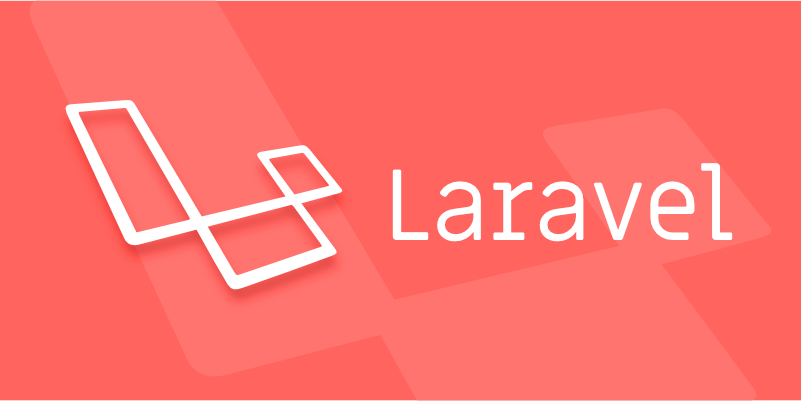Mastering advanced features of the Laravel Blade templating engine
Jul 04, 2025 am 02:32 AMLaravel's Blade template engine is not limited to rendering views, but also provides a variety of advanced features to improve code quality. 1. Custom instructions (such as @admin) can encapsulate complex logic and reduce duplicate code on templates; 2. Components and slots (such as

Laravel's Blade templating engine is more than just a tool for rendering views—it's a powerful system that can help you write cleaner, more maintained code when used properly. While most developers are familiar with basic syntax like {{ }} and @if , there's a lot more under the hood. Here are some advanced features and techniques that can take your Blade templates to the next level.

1. Custom Blade Directives: Extend Blade Your Way
Blade allows you to define custom directives, which can be super handy when you find yourself repeating logic in multiple templates.

For example, let's say you often need to display different content based on user roles. Instead of writing out an @if(Auth::user()->isAdmin()) every time, you can create a custom directive:
Blade::if('admin', function () {
return auth()->check() && auth()->user()->isAdmin();
});Now in your Blade template, you can simply write:

@admin
<p>Welcome, Admin!</p>
@else
<p>You don't have admin access.</p>
@endadminThis keeps your templates clean and encapsulates logic where it belongs—outside the view.
Other common uses include:
- Checking feature flags or environment settings
- Displaying content conditionally based on subscription plans
- Simplifying complex conditional statements
2. Components & Slots: Reusable UI Building Blocks
Blade components are Laravel's answer to reusable view elements—think of them like Vue or React components but for Blade.
Let's say you want to build a reusable button component. First, run:
php artisan make:component Button
This creates two files: app/View/Components/Button.php and resources/views/components/button.blade.php .
In the Blade file, you might write:
<!-- resources/views/components/button.blade.php -->
<button type="{{ $type }}" class="btn btn-{{ $color }}">
{{ $slot }}
</button>Then use it in any template like this:
<x-button color="primary" type="submit">Submit</x-button>
Slots allows for dynamic content inside your component. You can even use named slots if you need more structure:
<x-card title="User Profile">
<x-slot name="actions">
<a href="#">Edit</a>
</x-slot>
<p>User details go here...</p>
</x-card>This makes building consistent UI much easier and reduces duplication.
3. Blade Stacks: Managing Assets Per Page
Sometimes you'll want to add page-specific JavaScript or CSS without loading it everywhere. Blade stacks let you push content into a master layout from child views.
In your layout ( app.blade.php ), define a stack:
<head>
@stack('styles')
</head>Then in a child view:
@push('styles')
<link rel="stylesheet" href="/css/specific-page.css">
@endpush You can also use @prepend to insert at the beginning, or @stackOnce to prevent duplicates (available in Laravel 9 ).
This is especially useful for:
- Loading third-party libraries only when needed
- Injecting inline scripts or styles
- Keeping layouts clean and modular
4. Conditional Rendering with @unless and @empty
While @if and @else are widely known, fewer people use @unless and @empty .
@unless runs the block unless the condition is true:
@unless($user->isSubscribed())
<p>Please consider subscribe to unlock premium features.</p>
@endunlessIt's a nice alternative when you want to avoid double negatives in your logic.
@empty is great for checking both existence and emptiness:
@forelse($comments as $comment)
<div>{{ $comment->text }}</div>
@empty
<p>No comments yet.</p>
@endforelse This avoids having to do separate checks for isset($comments) and count($comments) .
That's basically it. These Blade features aren't hard to learn, but they can make a big difference in how clean and scalable your front-end code becomes. Use them wisely, and you'll spend less time fighting templates and more time building great stuff.
The above is the detailed content of Mastering advanced features of the Laravel Blade templating engine. For more information, please follow other related articles on the PHP Chinese website!

Hot AI Tools

Undress AI Tool
Undress images for free

Undresser.AI Undress
AI-powered app for creating realistic nude photos

AI Clothes Remover
Online AI tool for removing clothes from photos.

Clothoff.io
AI clothes remover

Video Face Swap
Swap faces in any video effortlessly with our completely free AI face swap tool!

Hot Article

Hot Tools

Notepad++7.3.1
Easy-to-use and free code editor

SublimeText3 Chinese version
Chinese version, very easy to use

Zend Studio 13.0.1
Powerful PHP integrated development environment

Dreamweaver CS6
Visual web development tools

SublimeText3 Mac version
God-level code editing software (SublimeText3)

Hot Topics
 How to test Laravel API interface?
May 22, 2025 pm 09:45 PM
How to test Laravel API interface?
May 22, 2025 pm 09:45 PM
Efficient methods for testing Laravel API interfaces include: 1) using Laravel's own testing framework and third-party tools such as Postman or Insomnia; 2) writing unit tests, functional tests and integration tests; 3) emulating a real request environment and managing database status. Through these steps, the stability and functional integrity of the API can be ensured.
 How to customize Laravel's user authentication logic?
May 22, 2025 pm 09:36 PM
How to customize Laravel's user authentication logic?
May 22, 2025 pm 09:36 PM
Custom Laravel user authentication logic can be implemented through the following steps: 1. Add additional verification conditions when logging in, such as mailbox verification. 2. Create a custom Guard class and expand the authentication process. Custom authentication logic requires a deep understanding of Laravel's authentication system and pay attention to security, performance and maintenance.
 How to create Laravel package (Package) development?
May 29, 2025 pm 09:12 PM
How to create Laravel package (Package) development?
May 29, 2025 pm 09:12 PM
The steps to create a package in Laravel include: 1) Understanding the advantages of packages, such as modularity and reuse; 2) following Laravel naming and structural specifications; 3) creating a service provider using artisan command; 4) publishing configuration files correctly; 5) managing version control and publishing to Packagist; 6) performing rigorous testing; 7) writing detailed documentation; 8) ensuring compatibility with different Laravel versions.
 Laravel integration with social media login (OAuth)
May 22, 2025 pm 09:27 PM
Laravel integration with social media login (OAuth)
May 22, 2025 pm 09:27 PM
Integrating social media login in the Laravel framework can be achieved by using the LaravelSocialite package. 1. Install the Socialite package: use composerrequirelaravel/socialite. 2. Configure the service provider and alias: add relevant configuration in config/app.php. 3. Set API credentials: Configure social media API credentials in .env and config/services.php. 4. Write controller method: Add redirection and callback methods to handle social media login process. 5. Handle FAQs: Ensure user uniqueness, data synchronization, security and error handling. 6. Optimization practice:
 How to implement password reset function in Laravel?
May 22, 2025 pm 09:42 PM
How to implement password reset function in Laravel?
May 22, 2025 pm 09:42 PM
Implementing password reset function in Laravel requires the following steps: 1. Configure the email service and set relevant parameters in the .env file; 2. Define password reset routes in routes/web.php; 3. Customize email templates; 4. Pay attention to email sending problems and the validity period of tokens, and adjust the configuration if necessary; 5. Consider security to prevent brute-force attacks; 6. After the password reset is successful, force the user to log out of other devices.
 Common security threats and protection measures for Laravel applications
May 22, 2025 pm 09:33 PM
Common security threats and protection measures for Laravel applications
May 22, 2025 pm 09:33 PM
Common security threats in Laravel applications include SQL injection, cross-site scripting attacks (XSS), cross-site request forgery (CSRF), and file upload vulnerabilities. Protection measures include: 1. Use EloquentORM and QueryBuilder for parameterized queries to avoid SQL injection. 2. Verify and filter user input to ensure the security of output and prevent XSS attacks. 3. Set CSRF tokens in forms and AJAX requests to protect the application from CSRF attacks. 4. Strictly verify and process file uploads to ensure file security. 5. Regular code audits and security tests are carried out to discover and fix potential security vulnerabilities.
 What is Middleware in Laravel? How to use it?
May 29, 2025 pm 09:27 PM
What is Middleware in Laravel? How to use it?
May 29, 2025 pm 09:27 PM
Middleware is a filtering mechanism in Laravel that is used to intercept and process HTTP requests. Use steps: 1. Create middleware: Use the command "phpartisanmake:middlewareCheckRole". 2. Define processing logic: Write specific logic in the generated file. 3. Register middleware: Add middleware in Kernel.php. 4. Use middleware: Apply middleware in routing definition.
 Laravel Page Cache Policy
May 29, 2025 pm 09:15 PM
Laravel Page Cache Policy
May 29, 2025 pm 09:15 PM
Laravel's page caching strategy can significantly improve website performance. 1) Use cache helper functions to implement page caching, such as the Cache::remember method. 2) Select the appropriate cache backend, such as Redis. 3) Pay attention to data consistency issues, and you can use fine-grained caches or event listeners to clear the cache. 4) Further optimization is combined with routing cache, view cache and cache tags. By rationally applying these strategies, website performance can be effectively improved.






